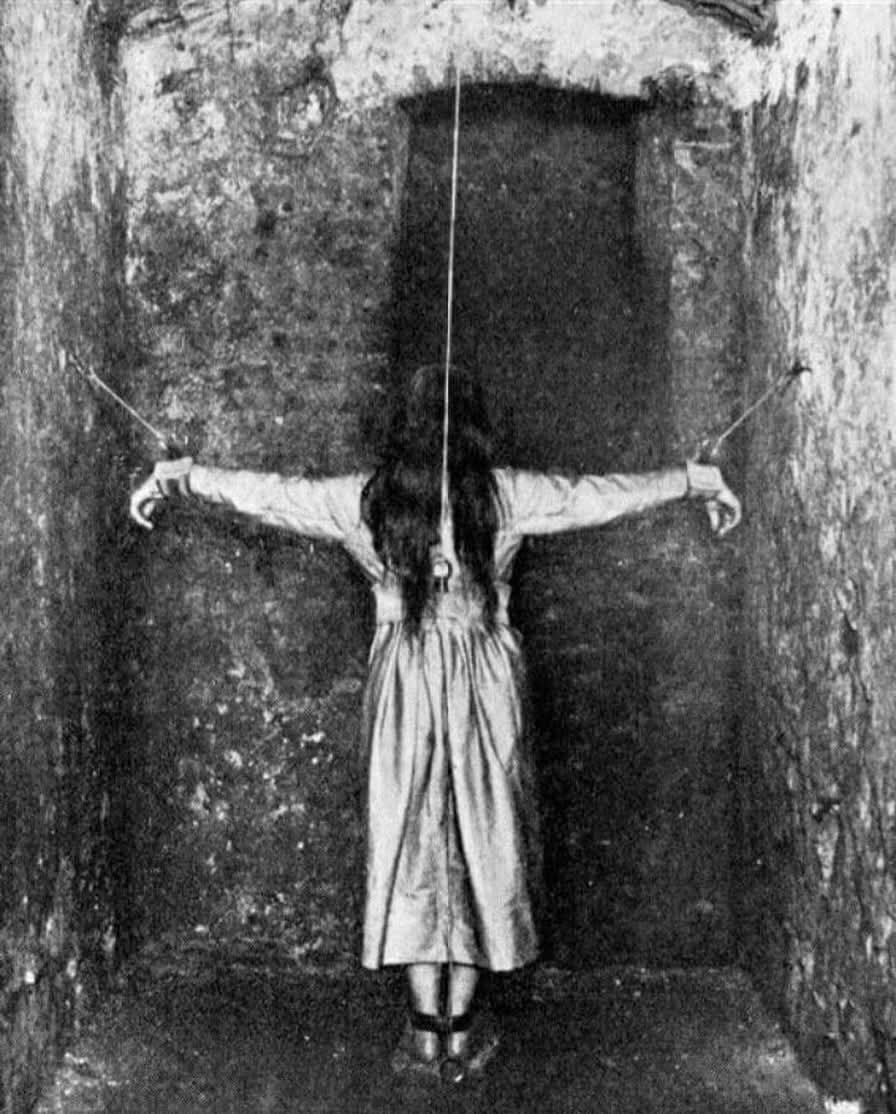[GUEST ACCESS MODE: Data is scrambled or limited to provide examples. Make requests using your API key to unlock full data. Check https://lunarcrush.ai/auth for authentication information.]  ArchaeoHistories [@histories_arch](/creator/twitter/histories_arch) on x 233.1K followers Created: 2025-07-22 08:24:43 UTC A patient stands inside a cramped cell with her arms strapped to the wall in Germany, 1890... In late 19th Century, ideas about mental illness were shaped by fear and moral judgment as much as by medicine. Many believed that harsh physical restraint or forced isolation could calm agitation or purge so-called madness. Devices like straitjackets, restraint chairs, or wall shackles were common. Patients might be tied up for hours or even days at a time. Germany, like other European countries, had large state asylums that were often overcrowded and underfunded. Though some doctors did try to bring more humane ideas into psychiatry (inspired by early reformers like Philippe Pinel or Johann Christian Reil) restraint and isolation were still widespread. Some treatments claimed to “shock” the patient back to sanity or force them to submit to authority, rooted in ideas of punishment and control more than care. © History Pictures #archaeohistories  XXXXX engagements  **Related Topics** [germany](/topic/germany) [Post Link](https://x.com/histories_arch/status/1947573510450123192)
[GUEST ACCESS MODE: Data is scrambled or limited to provide examples. Make requests using your API key to unlock full data. Check https://lunarcrush.ai/auth for authentication information.]
 ArchaeoHistories @histories_arch on x 233.1K followers
Created: 2025-07-22 08:24:43 UTC
ArchaeoHistories @histories_arch on x 233.1K followers
Created: 2025-07-22 08:24:43 UTC
A patient stands inside a cramped cell with her arms strapped to the wall in Germany, 1890...
In late 19th Century, ideas about mental illness were shaped by fear and moral judgment as much as by medicine. Many believed that harsh physical restraint or forced isolation could calm agitation or purge so-called madness. Devices like straitjackets, restraint chairs, or wall shackles were common. Patients might be tied up for hours or even days at a time.
Germany, like other European countries, had large state asylums that were often overcrowded and underfunded. Though some doctors did try to bring more humane ideas into psychiatry (inspired by early reformers like Philippe Pinel or Johann Christian Reil) restraint and isolation were still widespread. Some treatments claimed to “shock” the patient back to sanity or force them to submit to authority, rooted in ideas of punishment and control more than care.
© History Pictures
#archaeohistories

XXXXX engagements
Related Topics germany